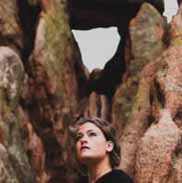Creative Commons License Flashcards, test questions and answers
Discover flashcards, test exam answers, and assignments to help you learn more about Creative Commons License and other subjects. Don’t miss the chance to use them for more effective college education. Use our database of questions and answers on Creative Commons License and get quick solutions for your test.
What is Creative Commons License?
Creative Commons License is a type of copyright that allows the public to use creative works such as images, music, videos and writings with certain restrictions. It was created to promote creativity and collaboration while still respecting the rights of the creators. This license enables anyone who has access to a Creative Commons work to use it for their own purposes without having to worry about legal issues or infringing on another’s rights. The Creative Commons License is divided into six main categories: Attribution (BY); NonCommercial (NC); NoDerivatives (ND); ShareAlike (SA); Public Domain Dedication (PD) and International Licenses. Each license has its own set of rules and requirements that must be followed in order for the user to legally use the work. The most common type of Creative Commons License is Attribution-ShareAlike, which allows users to share, copy and redistribute a work provided they give credit to the creator and license their new creations under identical terms. The NC or NonCommercial version does not allow any commercial use of a creative work unless permission from the copyright holder is obtained first. Similarly, ND or NoDerivatives prohibits any adaptation or modification of an original creative piece unless specified in advance by the copyright holder. Lastly, PD or Public Domain Dedication releases all rights associated with a particular piece so that it can be used freely by anyone for any purpose without having to ask permission from its creator or worry about infringement issues. By using Creative Commons licenses, creators are able to protect their intellectual property while allowing others access their works without fear of legal repercussions. It also creates an avenue through which creators can collaborate on projects without worrying about who owns what part of a project since everyone’s contributions are protected under one set of rules defined by Creative Commons licensing agreements.









